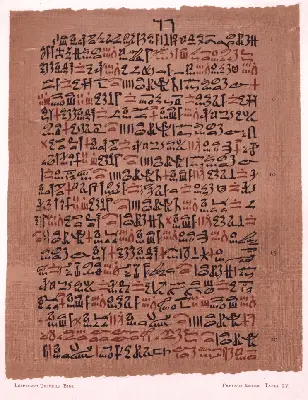
Egyptian Papyrus is made from a plant that grows on the banks of the Nile River in Egypt. The aquatic plant, Cyperus papyrus, grows up to 15 feet. Its green, triangular stem has long, sharp leaves and flower clusters up to 20 inches. Papyrus is made from the stem of this plant. The stem was also used for making boats, rope, and baskets.
As widely believed, Papyrus was not only used as a writing instrument, It was also used for mattresses on beds, for building chairs as well as for tables, mats, baskets, sandals, utensils, rope and boats. Furthermore, the papyrus root was a source of food, medicine, and perfume.
Papyrus was one of Egypt’s chief exports. But it did not survive for a long time because only the dry climate of Egypt was conducive to its preservation. Papyrus with writing on it is known as papyri. The climate of Egypt preserved papyri in the ruins of ancient towns and cemeteries.
Egyptian Papyrus Making Process
Then the whole thing was soaked in water and pressed under a heavy rock for 21 days. The juice of the plant acted like glue and bonded the strips together. The outcome was a sheet, which was hammered flat and dried in the sun. The process differed slightly in different periods of Egyptian history, but the essence was almost the same.
For longer documents, the pages were joined to create a papyrus roll. In fact, papyrus sheets were usually not sold individually, but in rolls. There were also Papyrus books called codex, in later periods.Each type of Papyrus was used for different purposes. Very cheaply made coarse papyrus was used by merchants to wrap items. The finest and most expensive varieties were reserved for religious or literary works.
The finest papyrus was made using the innermost pith layers and was said to have come from the Delta region. The various varieties and sizes of papyrus were often named in honor of emperors or officials. The ancient subject matter recorded on papyrus can be extremely varied and can include literature, religious texts, magical texts and even instrumental music.
Production of Papyrus paper and cultivation of papyrus plantations were neglected after the invention of paper and papyrus actually disappeared from the Egyptian landscape.